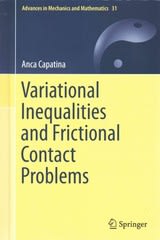Answered step by step
Verified Expert Solution
Question
1 Approved Answer
Let ~ (1 , 12), ~ (2 , 22). Furthermore, X and Y are independent to each other. Please derive the distribution of (1) X+Y
Let ~ (1 , 12), ~ (2 , 22). Furthermore, X and Y are independent to each other.
Please derive the distribution of
(1) X+Y
(2) X-Y
(3) 2x-3y+6
Step by Step Solution
There are 3 Steps involved in it
Step: 1

Get Instant Access to Expert-Tailored Solutions
See step-by-step solutions with expert insights and AI powered tools for academic success
Step: 2

Step: 3

Ace Your Homework with AI
Get the answers you need in no time with our AI-driven, step-by-step assistance
Get Started


